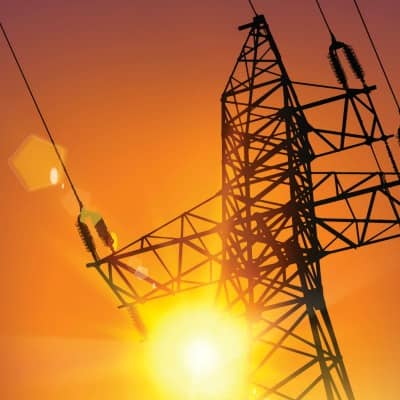 There is a scene in John Boorman's ‘Excalibur’ where a disembodied voice offers harried Sir Perceval the Holy Grail to take back to long-suffering King Arthur so he can heal the realm. Perceval balks, and we need an extra 20 minutes or so to get this sorted out before the big fight.
There is a scene in John Boorman's ‘Excalibur’ where a disembodied voice offers harried Sir Perceval the Holy Grail to take back to long-suffering King Arthur so he can heal the realm. Perceval balks, and we need an extra 20 minutes or so to get this sorted out before the big fight.
At the Solar Power International conference in Las Vegas in October, Jon Wellinghoff, former chair of the U.S. Federal Energy Regulatory Commission (FERC) and now a partner at Stoel Rives LLP, presented utility representatives with his concept for integrating distributed generation (DG) solar onto the grid.
The response was essentially, ‘What's in the cup?’
The scene was a panel discussion on utility engagement in distributed solar transactions within regulated service territories. Wellinghoff, drawing from a recent paper he co-wrote with fellow panelist James Tong, vice president of strategy and government affairs at Clean Power Finance, pointed out that the regional transmission organizations (RTOs) and independent system operators he oversaw at FERC could provide a useful model at the energy distribution level.
‘We would have independent distribution system operators that would be under the state public utility commission that would operate the system and create a market at the distribution level,’ Wellinghoff said. ‘The transmission system is owned by the investor-owned utilities. They maintain those assets, and they get a return on them.’
Nice grail. But by and large, investor-owned utilities already operate in a market where they make investments in transmission infrastructure for which they generate a return in the form of charges on monthly electric bills. The draw, Wellinghoff said, is that utilities would be able to avoid much of the risk associated with infrastructure investments.
‘They would have less risk because an independent entity would be recommending what the investment should be to the regulators,’ he said. ‘This would be done independently for the betterment of the system so as to lower costs and enable as much distributed resources as possible to be integrated onto the grid.’
Risk reduction as a sweetener appeared to be a bit of a hard sell. Putting aside for a moment the fact that utilities with shareholders and boards of directors have their own mechanisms for calculating risk, the utility representatives on the panel wondered how the actual costs of such a structure would be borne.
‘The challenge that I see is how do you manage the cost?’ said Jeff Guldner, senior vice president for public policy at Arizona Public Service Co. ‘For a utility, cost and liability are core, central concerns.’
In particular, Guldner pointed out that RTOs are able to optimize dispatch from central station generation across a very broad footprint. Multiple utilities sharing the RTO infrastructure – and the risk – are what offset the costs of the system. By contrast, Guldner said, more localized distribution system operators would have different market forces to contend with.
‘There will have to be a really careful look at what kind of economies we can get that can offset the costs,’ he said. ‘What are the transaction costs, and how do you pick them up in a market like Arizona that isn't in an RTO?’
Supply and demand and response
If utilities balk at the notion of reorganizing the distribution infrastructure with another layer of regulatory oversight, they are much more eager to pursue the possibilities DG offers in the realm of demand response (DR). The possibility that ratepayers could use their DG systems to help offset grid loads and even provide stability services is attractive to utilities on several levels. For one, the DG system solves actual problems the utility faces on a daily basis. For another, the utility achieves more control over the DG infrastructure rather than less.
The problem, from the utility point of view, is that DG incentives currently are much more likely to reward sheer kilowatts produced rather than selective and timely generation. Guldner pointed out that a solar customer in a net-metering regime has no incentive to change their power production and consumption practices.
‘How do you send a signal that there is value in your system producing less real power, but providing the grid some reactive power?’ he asked. ‘Ideally, we would do that through a market. The challenge is how do we start to do that?’
Rob Caldwell, senior vice president for distributed energy resources at Duke Energy, said his utility was pursuing a number of DR programs across all of its jurisdictions.
‘I think you can take advantages of smart technologies in the home and tie those with smart technologies in the distribution center,’ Caldwell said. ‘I think we can take advantage of the technology in the DR space and then marry that with technology in the DG space to manage both more cost-effectively.’
The problem is that there is not just one distribution system, even within the service area of a single utility. Each one of Duke Energy's distribution systems is designed and set up differently. Therefore, Caldwell said, each has to be managed differently. Differently means more money.
Clean Power Finance's Tong said the various technologies and systems in the distributed world – storage, DG, smart appliances – are all able to provide benefits on a stand-alone basis but are also able to produce chaos.
‘To really maximize the benefit of these different technologies, somebody is going to need to coordinate them and make sure that voltage, frequency and other factors can be managed correctly,’ Tong said, putting the grail back on the table. ‘And that's what the distribution system operator does.’

